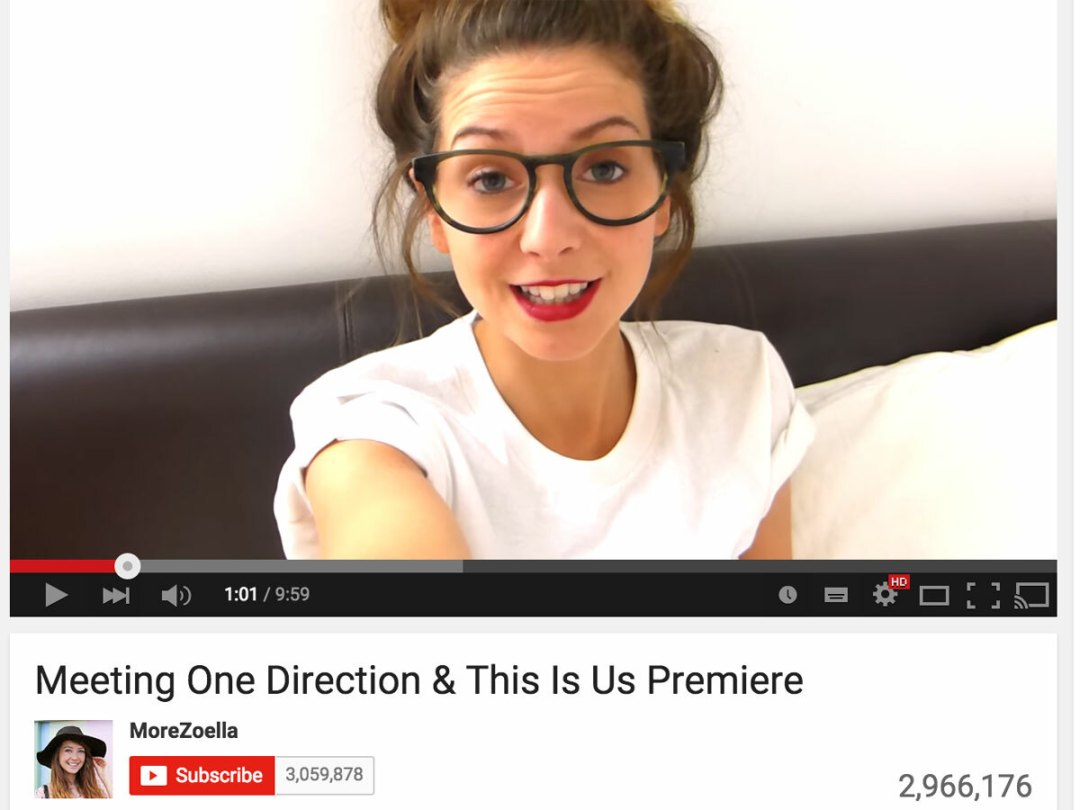YouTube at 10: The future of music playback and the death of magazines. Oh, and some videos
The world’s biggest video site isn’t just rethinking telly; its transformative nature goes far wider, and it’s all about the kids, man

Douglas Adams once came up with a set of rules to perfectly describe people’s relationships with and reactions to technology. He argued that anything that existed in the world when you were born was “normal and ordinary” and “just a natural part of the way the world works”. Anything invented between when you’re 15 and 35 was “new and exciting and revolutionary and you can probably get a career in it”. And anything invented after your 35th birthday is “against the natural order of things”.
This is probably why I and plenty of others who’d hit that magic number or beyond found it both fascinating and deeply weird when it was revealed in 2012 that the first choice of teenagers for listening to music wasn’t radio, iTunes, CDs, Spotify or even MP3s naughtily downloaded via file-sharing sites — instead, it was YouTube.
The notion of a video website being used to consume music was just plain odd — against the natural order of things. And then when a flurry of mobile apps arrived that hooked into YouTube, specifically to access music, that was even weirder. But it was just another example of how despite being an industry giant — a behemoth stomping about and crushing competition underfoot — YouTube has also retained the ability to surprise and be transformative when it comes to creating and consuming media.
Elsewhere, YouTube’s impact has been similarly apparent. Games magazines once provided the lion’s share of income for several publishers, but now wither on the vine as the audience that once would have devoured them flocks to YouTube. Gamers build up huge audiences, disproportionately skewed towards the young, chatting about games in front of their PC’s cameras. These ad-hoc shows can have a humanity and individuality that even the anarchic Newsfield magazines of the mid-1980s could only touch on. There’s an immediacy regarding content and contact; and, of course, everyone watching can respond almost immediately with a video of their own.
It’s gotten to the point where video bloggers (or ‘vloggers’, to use a term that will seem perfectly natural to the young but probably want to make the over-35s punch their own faces off) can now have huge influence. With subscription and audience numbers TV networks would kill for, such figures are courted by advertisers who believe a direct recommendation to millions of vlogger followers is a few thousand bucks of marketing budget well spent. In the media, we see people talking about this YouTube phenomenon being a stepping stone to ‘proper’ jobs in print journalism, online writing, and television. This misses the point, because what we’re seeing is not joining the dots between the new and the traditional, but a gradual, wholesale replacement of the old guard.
In a sense, it’s ironic that such a dominant platform from a corporate giant is both foundation and catalyst for such change, but then media has always been about audience. YouTube enables potentially anyone to get their name out there, and for consumers to access an increasingly large range of content, in a manner that other platforms simply cannot compete with.
But looking at these trends, it’s hard to see YouTube merely becoming the killer of traditional telly; given enough time, it looks more likely to enable the next generation to replace traditional media entirely and remake it in their own image. Anyone over 35 will just have to sit in the corner, gently rocking back and forth, playing an old Sex Pistols album on a first-gen walkman, while wearing a copy of Zzap!64 as a hat.
More YouTube at 10 › YouTube at 10: How the video site killed traditional television



